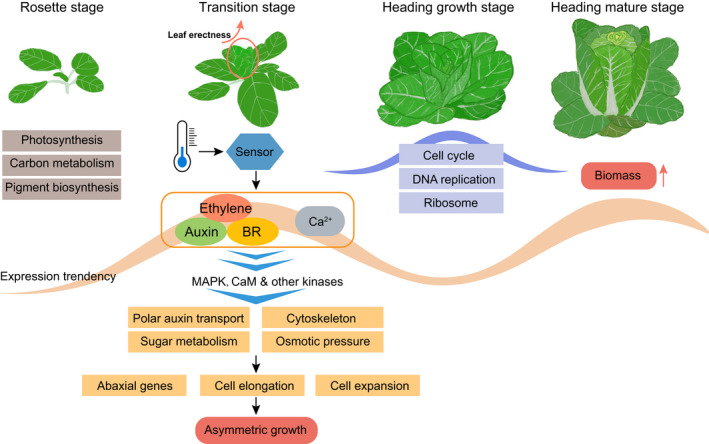Figure 7.

Hypothetical regulatory model to help explain the transcriptional dynamics during the heading differentiation process in Chinese cabbage.The rosette stage is accompanied by enhanced photosynthesis and many other primary metabolisms. The transition stage (our primary contribution to this discussion), in which the development of the folding and erect leaf begins, is considered a particularly important stage. Exogenous stimuli, such as low temperatures, are, hypothetically, sensed by sensor proteins. Plant hormones and second messenger Ca2+ are then activated, and the signals of which are transmitted and magnified through the MAPK signaling pathway and other kinases such as CaMs. These enhanced signals triggered many biological processes and promoted the asymmetric growth of leaves in which essential adaxial and abaxial identities have already been set. In the heading growth stage, many growth‐related processes were activated (indicated by the purple ribbon). In the heading mature stage, the re‐enhanced hormonal pathways (indicated by the light orange ribbon), promoted the formation of the leafy head and boost biomass. BR, brassinosteroid.
